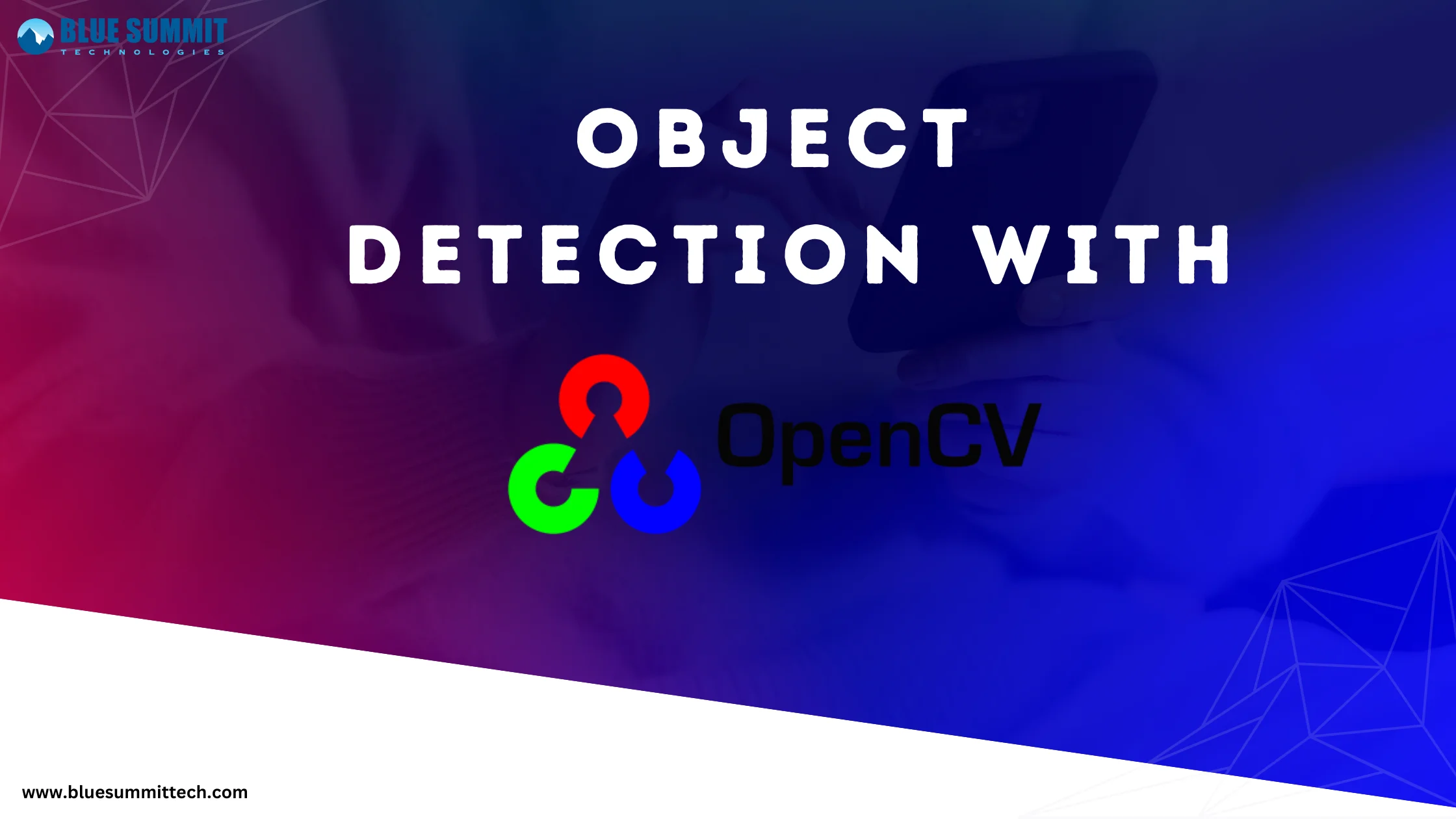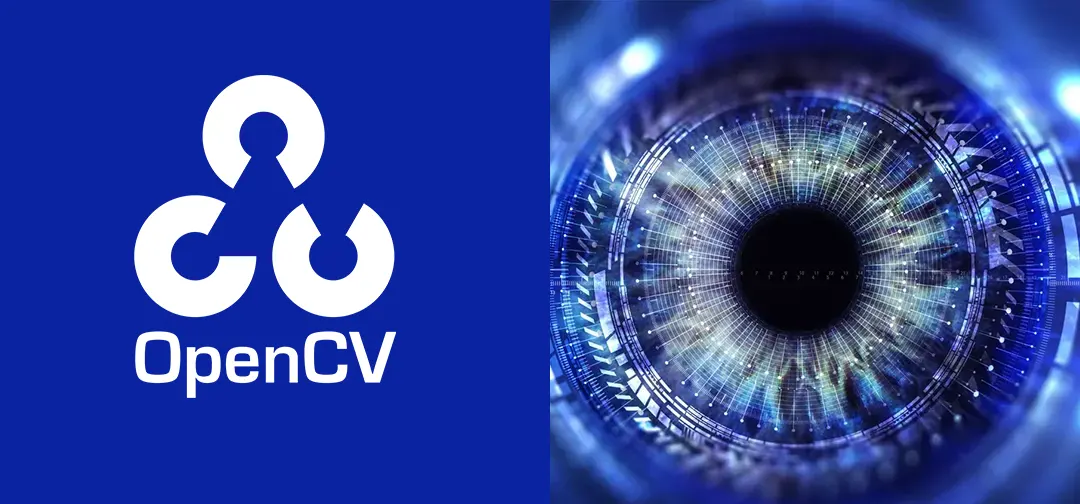
Posted on Thursday, Jul 18th, 2024
Simplifying Object Detection with OpenCV
Object detection and recognition are cornerstones of computer vision applications, transforming how we interact with technology. From autonomous vehicles to facial recognition systems, these technologies are reshaping industries. OpenCV, an open-source computer vision library, offers powerful tools for object detection and recognition. In this blog, we’ll explore the capabilities of OpenCV in object detection and recognition, delve into 3D object recognition and tracking, and highlight how Blue Summit, as an OpenCV development company, can assist in leveraging these technologies for your projects.
Understanding OpenCV Object Detection
OpenCV object detection involves identifying objects within an image or video stream and determining their precise locations. This process is crucial for various applications, such as surveillance systems, robotics, and augmented reality. OpenCV provides several methods for object detection, including-1. Haar Cascades
Haar Cascades are one of the oldest methods in the OpenCV library for object detection. It relies on a large number of positive and negative images to train a cascade function, which can then be used to detect objects in other images. The simplicity and speed of Haar Cascades make them suitable for applications where speed is crucial, although they may not be as accurate as modern deep learning methods.2. HOG + SVM
The Histogram of Oriented Gradients (HOG) descriptor, combined with a Support Vector Machine (SVM), is a popular technique for object detection, particularly for pedestrian detection. HOG captures gradient structure that is characteristic of local shape, and SVM is used for classification. This method strikes a balance between speed and accuracy, making it widely used in various applications.3. Deep Learning-Based Approaches
Deep learning has revolutionized object detection by providing highly accurate models. YOLO (You Only Look Once), SSD (Single Shot Multibox Detector), and Faster R-CNN are some of the most popular models. These models can detect multiple objects in real-time with high precision. They work by dividing the image into regions and predicting bounding boxes and probabilities for each region.Diving into OpenCV Object Recognition
OpenCV object recognition goes a step further by not only detecting objects but also identifying them. It involves comparing detected objects with a database of known objects to find matches. This is crucial for applications like facial recognition, where identifying specific individuals is necessary.Object recognition techniques in OpenCV include-
1. Template Matching
Template matching is one of the simplest forms of object recognition. It works by sliding a template image over the input image and measuring the similarity at each position. This method is easy to implement and can be effective for objects with well-defined and consistent appearances. However, it is sensitive to variations in scale, rotation, and lighting.2. Feature Matching
Feature matching involves detecting keypoints in an image and describing them with descriptors. Algorithms like SIFT and ORB are used to extract these features. Matching is done by comparing the descriptors of keypoints between the input image and the reference image. This method is robust to changes in scale and rotation and can handle partial occlusion.3. Deep Learning-Based Recognition
Convolutional Neural Networks (CNNs) have significantly improved the accuracy of object recognition. These models learn hierarchical representations of data, making them effective for recognizing complex objects. Pre-trained models like VGG, ResNet, and Inception can be fine-tuned for specific recognition tasks, providing high accuracy and robustness.Exploring OpenCV 3D Object Recognition and Tracking
OpenCV 3D object recognition and opencv 3d tracking involve detecting and recognizing objects in three-dimensional space. This is particularly useful in augmented reality, robotics, and navigation systems where understanding the spatial relationship between objects is crucial.3D object recognition in OpenCV can be achieved using techniques like:
1. Stereo Vision
Stereo vision involves using two cameras to capture images from slightly different perspectives. By comparing these images, depth information can be inferred, allowing the reconstruction of the 3D structure of the scene. This method is widely used in robotics and augmented reality applications.2. Point Cloud Processing
Point clouds are collections of points in 3D space, typically generated by depth sensors like LiDAR or stereo cameras. Processing these point clouds involves filtering, segmentation, and feature extraction to recognize and track objects in 3D space. OpenCV provides tools for handling point clouds and integrating them with 2D image data.3. Model-Based Recognition
Model-based recognition involves matching 3D models of objects with data captured from the environment. This technique is used in applications like robot navigation and augmented reality, where accurate 3D models of objects are available. By aligning the models with observed data, precise object recognition and tracking can be achieved.Real-World Applications of OpenCV Object Detection and Recognition
The applications of OpenCV in object detection and recognition are vast and varied. Here are some real-world scenarios where these technologies are making a significant impact:1. Autonomous Vehicles
Object detection and recognition are critical for the safe operation of autonomous vehicles. These systems need to detect and recognize other vehicles, pedestrians, traffic signs, and obstacles in real-time to navigate safely. OpenCV’s robust algorithms provide the necessary tools to achieve this.2. Surveillance and Security
In surveillance systems, object detection and recognition are used to monitor activities and identify potential threats. Facial recognition technology, powered by OpenCV, can identify individuals in a crowd, enhancing security in public places.3. Healthcare
In healthcare, OpenCV object detection and recognition are used in medical imaging to identify abnormalities in scans and images. For instance, detecting tumors in MRI scans or identifying fractures in X-rays can be automated using OpenCV.4. Retail and E-commerce
Retail and e-commerce industries use object recognition for inventory management and enhancing customer experiences. Automated systems can track inventory levels and recognize products, streamlining operations and improving accuracy.Blue Summit: Your trusted OpenCV Partner
At Blue Summit, we specialize in leveraging OpenCV for various computer vision applications. Our expertise in OpenCV development can help your projects in several ways:1. Custom Solutions
We provide tailored solutions for your specific needs, whether it’s object detection, recognition, or 3D tracking. Our team works closely with you to understand your requirements and deliver solutions that meet your objectives.2. Integration
We integrate OpenCV capabilities into your existing systems, ensuring seamless functionality and performance. Whether you need to add object detection to a surveillance system or integrate 3D tracking into a robotics application, we have the expertise to make it happen.3. Optimization
Our team optimizes OpenCV algorithms to enhance speed and accuracy, crucial for real-time applications. We ensure that your systems operate efficiently, even in resource-constrained environments.4. Consulting and Support
We offer consulting services to help you understand the best approaches for your projects and provide ongoing support to ensure success. Our experts are available to guide you through the development process, troubleshoot issues, and offer advice on best practices.Conclusion
OpenCV’s capabilities in object detection, recognition, and 3D tracking are transforming various industries. By leveraging these technologies, you can enhance your applications' functionality and user experience. Blue Summit is here to help you harness the power of computer vision for your projects. Whether you need custom solutions, integration, optimization, or consulting, we are committed to delivering excellence.Blue Summit has collaborated with OdiTek Solutions, a frontline custom software development company. It is trusted for its high service quality and delivery consistency. Visit our partner's page today and get your business streamlined.
REFER TO OTHER RELEVANT CONTENTS

OpenCV Development
OpenCV, which stands for Open Source Computer Vision, is a robust open-source library dedicated to image processing. Developed originally by Intel and later supported by Willow Garage and Itseez, OpenCV has become a cornerstone in computer vision applications, particularly in the realms of Artificial Intelligence...
read more







